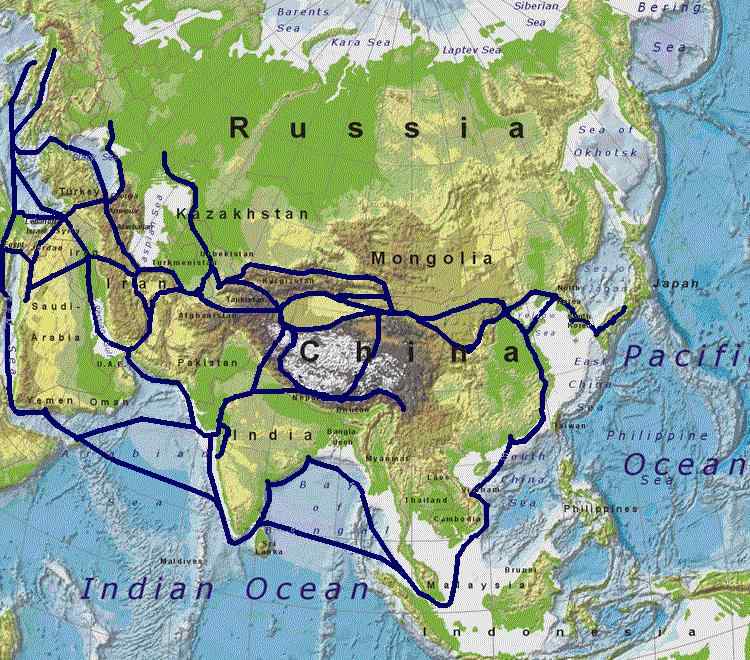The Silk Road: How Ancient Trade Routes Shaped the Modern World
The Enduring Legacy of the Silk Road: A Bridge Between East and West
Ever wondered how ancient civilizations connected and exchanged treasures? For centuries, the Silk Road was not merely a path but a vast, intricate network of trade routes spanning over 4,000 miles, linking the East and West.
Far more than just a conduit for silk, this historic network fostered a profound exchange of goods, revolutionary ideas, diverse religions, and rich cultures that fundamentally shaped societies across continents.
This article delves into the remarkable history, lasting impact, and modern legacy of this crucial ancient trade route, exploring its rise, peak, decline, and its modern-day resonance.
The Origins and Development of the Silk Road (2nd Century BCE - 14th Century CE)
The Silk Road’s origins can be traced to China's Han Dynasty (207 BCE – 220 CE).
Emperor Wu of Han sent Zhang Qian on a mission, which, though not fully achieving its military aim, successfully opened up new trade routes to Central Asia.
This marked the beginning of extensive exchanges, most famously of Chinese silk for goods like horses.
Initially, these ancient trade routes were mainly land-based, navigating challenging landscapes such as the Taklamakan Desert and the Pamir Mountains.
Later, sea routes emerged, linking China and Southeast Asia with India, the Arabian Peninsula, and ultimately, Europe.
Important cities like Chang'an (Xi'an), Samarkand, Bukhara, and Constantinople thrived as central trading hubs, evolving into vibrant centers of culture and commerce.
Empires such as the Kushan, Parthian, and Mongol Empires were instrumental in the expansion and upkeep of the Silk Road network.
Beyond Silk: The Exchange of Goods and Ideas
Though silk was highly prized in the West, the Silk Road enabled the trade of an extensive variety of goods.
China provided items like tea, porcelain, spices, jade, and paper. In return, the West offered wool, linen, gold, silver, precious stones, and glass.
Yet, the influence of the Silk Road went far beyond just material items.
Even more crucial was the immense cultural exchange and the sharing of ideas.
Buddhism, for instance, journeyed from India to China, Korea, and Japan via the Silk Road, deeply shaping East Asian societies.
Other faiths, including Nestorian Christianity, Manichaeism, and Islam, also spread along these routes, forming new communities and altering the religious map.
Significant technological innovations, such as papermaking, gunpowder, and the compass, moved westward, playing a role in Europe's Renaissance and Scientific Revolution.
Scientific and mathematical knowledge also flowed freely, enriching understanding across civilizations.
The Decline and Legacy of the Silk Road (15th Century CE onwards)

The Silk Road began its decline around the 15th century, influenced by several key factors.
The emergence of sea-based trade routes, made possible by breakthroughs in shipbuilding and navigation, offered a quicker and more affordable way to transport goods.
Political instability, such as the breakup of the Mongol Empire and the rise of the Ottoman Empire, also hampered trade along the traditional land paths.
Furthermore, European exploration and colonization redirected global trade, establishing direct maritime links to Asia.
Even with its eventual decline, the Silk Road left an undeniable legacy.
It significantly promoted cultural exchange, boosted economic development, and facilitated the widespread sharing of knowledge and innovation.
The many cities that once thrived along the Silk Road continue to hold profound historical and cultural importance, preserving echoes of its rich past.
The Modern Silk Road: The Belt and Road Initiative
In the 21st century, China introduced the Belt and Road Initiative (BRI), a monumental infrastructure project designed to rekindle the spirit of the original Silk Road.
The BRI aims to forge stronger connections between China, Asia, Africa, and Europe through an expansive network of railways, roads, ports, and energy pipelines.
While the Belt and Road Initiative holds significant promise for enhancing economic growth and global connectivity, it has also drawn criticism concerning issues like debt sustainability, geopolitical ramifications, and environmental impact.
Conclusion
The Silk Road remains a powerful symbol of how trade and cultural exchange can profoundly shape history.
Its lasting impact on the development of civilizations throughout Eurasia is undeniable.
From spreading religions and vital technologies to facilitating the broad exchange of goods and innovative ideas, the Silk Road played a pivotal role in creating the world we inhabit today.
The contemporary Belt and Road Initiative, though distinct, highlights the enduring importance of the Silk Road's legacy as a vital bridge between East and West.
```